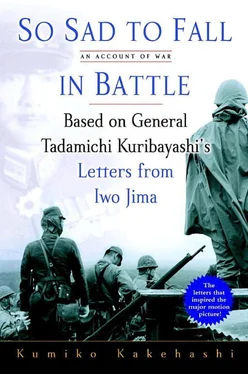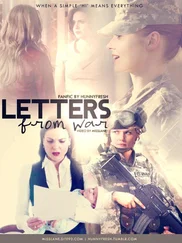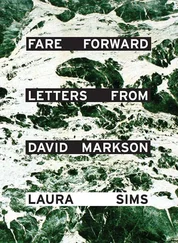The construction of inland defenses started immediately upon the issuing of this order. As Kuribayashi had taken up his command only two weeks before, this was quick work.
Based on staff diaries and other sources discovered after the war’s end, the official history describes Kuribayashi’s new plan for the defense of Iwo Jima as follows:
To create strong, honeycomb bases on Mount Suribachi and in the Motoyama area that can hold out for a long time and accommodate a powerful reserve force. If the enemy does attack, they shall be allowed to land. We shall attack them after they have reached the No. 1 Airfield, drive them back to the sea, and exterminate them.
“A honeycomb base” ( Fukkaku Jinchi in Japanese) means a strong defensive position designed to allow long-term resistance even after the enemy has broken through the lines of defense.
Let me summarize Kuribayashi’s idea simply:
• The aim is to hold out as long as possible, so key defensive installations will not be placed near the beach where the enemy lands, but inland on Mount Suribachi and in the Motoyama area. A reserve corps will be maintained in readiness for the enemy assault.
• When the enemy attacks, they will be allowed to land unmolested without any resistance at the water’s edge. The counterattack will only get under way once the enemy has progressed as far as No. 1 Airfield, whereupon the enemy will be pushed back to the shore.
Mount Suribachi was a dormant volcano on the southwest end of the island; the Motoyama region was a plateau in the northeast. Kuribayashi decided to place his main defensive positions at these two points, both of which were away from the shoreline. Squeezed neatly between them was Chidorigahara, where the No. 1 Airfield (also called Chidori Airfield) was located.
Chidori Airfield was all of 800 meters from the beach where the Americans were expected to land. It seemed likely that the first thing the Americans would do after landing would be to try to capture this airfield, so Kuribayashi decided to make his first attack there.
If he put his key defenses on the beach and tried his damnedest to prevent the Americans from landing and the strategy failed, the island was sure to be overrun quickly. But if he could first lure the enemy into Chidori Airfield and launch an attack when they were caught between the inland defenses he had built in Suribachi and Motoyama, his forces could inflict damage on the enemy while also being able to withdraw into their positions afterward.
The ultimate goal was to wage a drawn-out battle of attrition. Avoid a showdown on the beach; launch one attack; withdraw; then start an intense, long-term resistance based on multiple lines of defensive positions. This was the plan of Kuribayashi the rationalist.
KURIBAYASHI’S IDEA MET with fierce resistance from the navy.
“It’s outrageous! In full knowledge of the situation, he’s planning to let the enemy land and then he’s going to hand them a crucial airfield on a plate.”
“Smashing the enemy on the beach is standard procedure in our island strategy.”
Such were the opinions of the navy.
In mid-August, Colonel Urabe Kiyoshi, staff officer of the Third Air Fleet, visited Iwo Jima together with Major General Sanada, operations chief of the Army General Staff, and Major General Nakazawa, operations chief of the Navy General Staff. Urabe was emphatic about what he wanted.
“It is imperative to retain the air base on Iwo Jima so it can continue to serve as our unsinkable aircraft carrier. That is why we must annihilate the enemy before they even make it to the beach.”
Urabe then advised them to build a large number of sturdy pillboxes (small defensive installations made of concrete) on either side of Chidori Airfield.
At this stage, inland positions were already being built in Iwo Jima in accordance with Kuribayashi’s plan. Since the navy was providing all the necessary weapons and material for this, Staff Officer Urabe pressed the army to loan manpower to the navy for the construction of shoreline defenses. The navy was insistent that “This is what central command wants.” Kuribayashi did not deviate from his policy of building the key defensive positions inland rather than at the water’s edge. After all, it was all very well for the navy to talk about “unsinkable aircraft carriers,” but by August 10, the total number of functioning planes on Iwo Jima was paltry: eleven Zero fighters, two shipboard attack planes, and two night fighters.
In the end, Kuribayashi promised army cooperation for the building of navy pillboxes at the shoreline. He thought the material the navy said it would provide could come in handy for building the army’s underground installations.
But the materials were not delivered according to the original agreement, and both cement and dynamite were in very short supply on Iwo Jima. Kuribayashi is thought to have negotiated terms whereby half of the munitions and material supplied by the navy would go into building pillboxes on the beach, while the rest would be for the use of the army.
After the war, Major Horie Yoshitaka and Major Shirakata Fujie, who were army staff officers in the 109th Division, reminisced about Kuribayashi’s approach.
“The commander in chief was still a firm believer in inland defensive positions. If the navy provided him with the materials to build strong pillboxes on the beach, he planned to offer them a proportion of the army’s manpower and to use the materials he received in return for that in a more effective manner. He thought the defenses on the shoreline should be decoys to draw the fire of the enemy’s naval guns” (from the official history).
Staff Officer Horie secured Kuribayashi’s agreement on August 18. He immediately sent a telegram to the combined fleet commander in the navy section of the Imperial General Headquarters.
…Based on lessons learned from many past battles, we believe that the best way to defend this island is by destroying the enemy landing force and, in particular, boats transporting tanks and heavy artillery, before they reach the shore.
The army and navy here are of completely the same opinion with regard to this matter. In order that we can do this, please persuade the various departments at central command and make arrangements to procure the necessary weaponry and materials listed below and send them here as soon as you can.
The message includes the phrase “Based on lessons learned from many past battles,” but the defenses of Tarawa, Makin, and Saipan—where the water’s-edge doctrine had been applied—had ended in complete failure. The lesson that should have been learned from these battles was quite clear: “destroying the enemy landing force and, in particular, boats transporting tanks and heavy artillery, before they reach the shore” was not possible.
—
THE “NECESSARY WEAPONRY and materials” requested by Staff Officer Horie in his telegram were as follows:
1. Weapons
[i] Seventy 25-mm machine guns (with 2,000 armor-piercing rounds, and 500 standard rounds)
[ii] Fifty 250-kilogram rocket shells
2. Materials
12,000 tons of cement; 750 tons of metal rods for reinforcing concrete equal to 282,650 cubic meters; 15 kilometers of No. 20 heat-reinforced steel wire; 60 tons of nails; 200 sheets of wrought iron; 20 small stone-crushers
Kuribayashi was true to his promise and helped the navy to build their defenses on the shoreline. All he received in return from navy central command in the way of weapons and material was three thousand tons of cement and seventy-five 25-mm machine guns.
An estimated twenty-six pillboxes were built along the shore near Chidori Airfield thanks to the cooperation of the army. They were obliterated in almost no time by the air raids and naval bombardments that preceded the American landing.
Читать дальше












